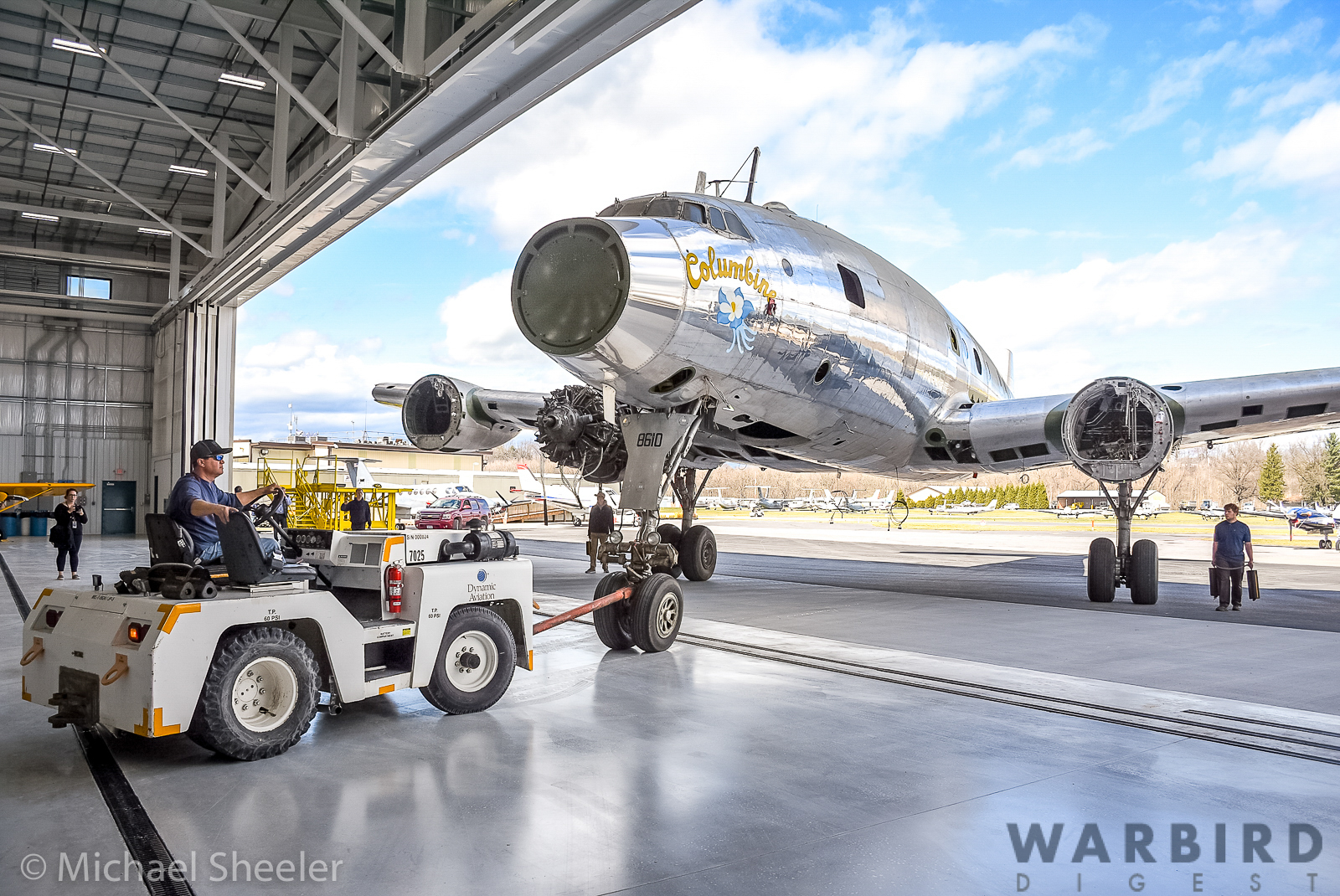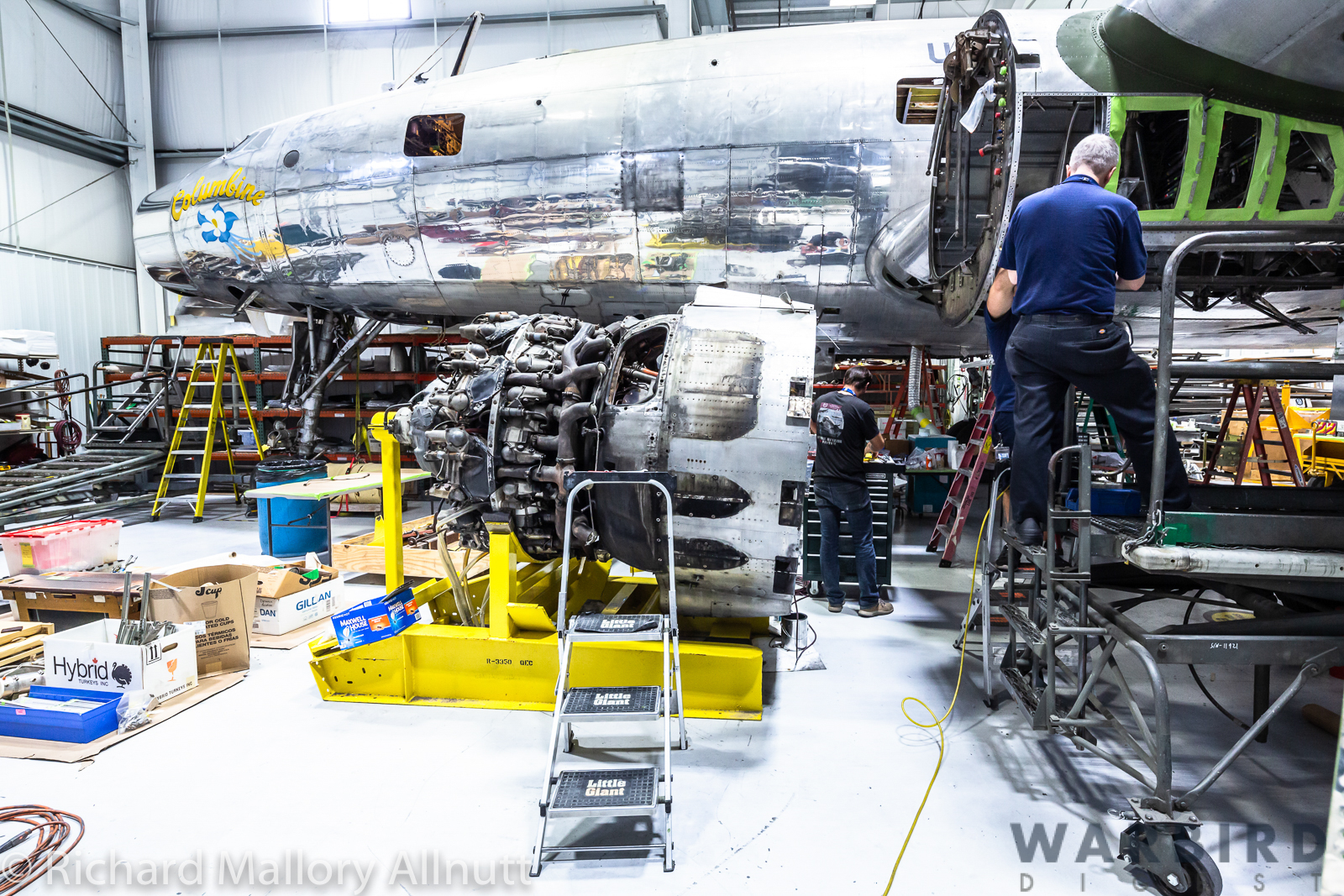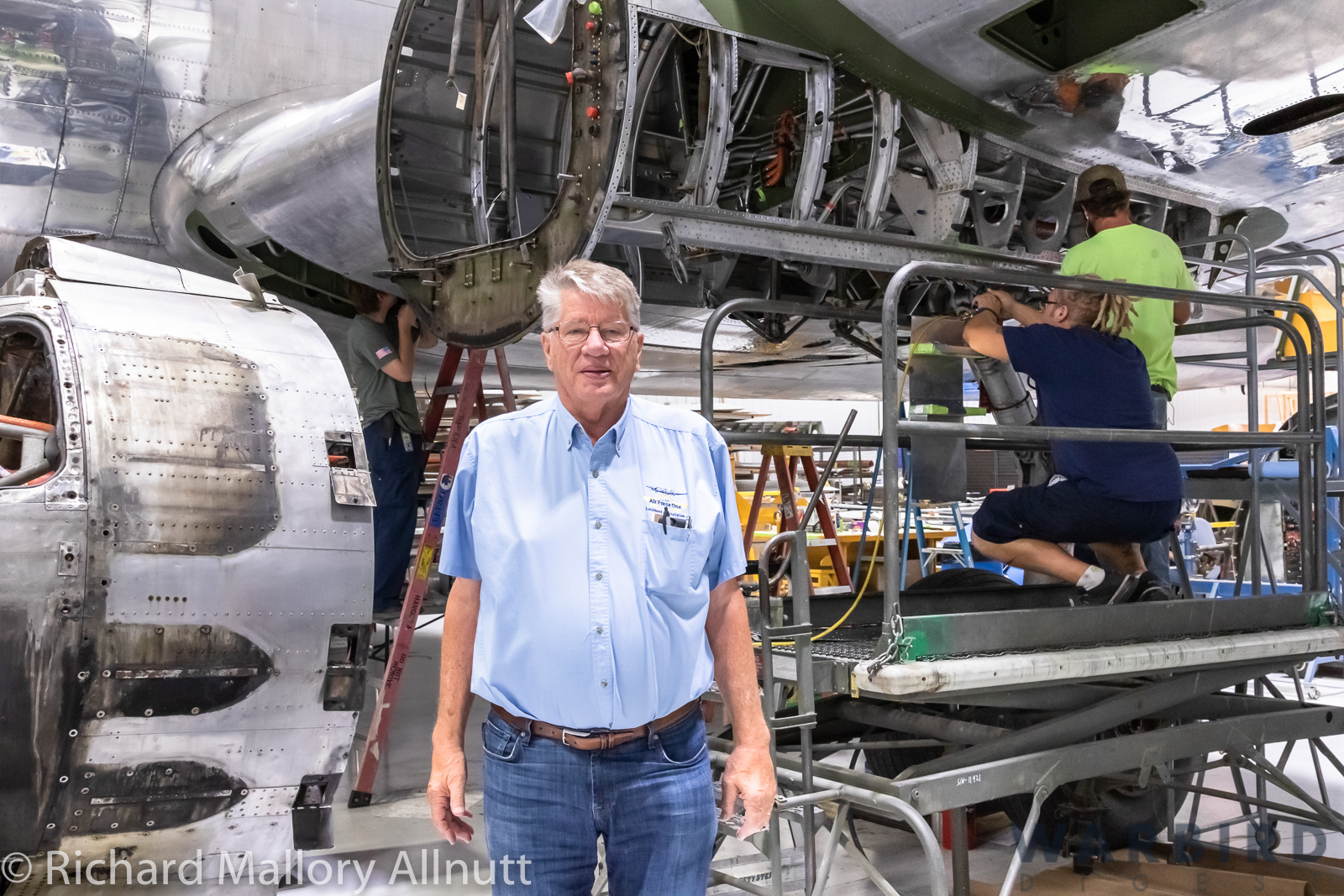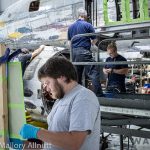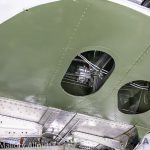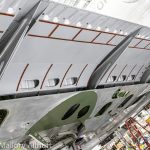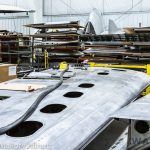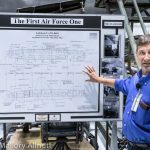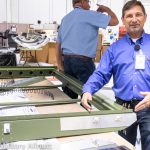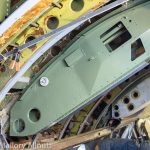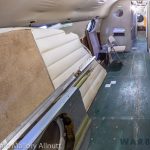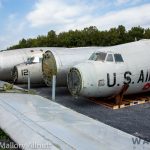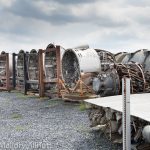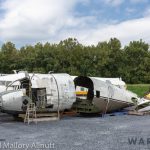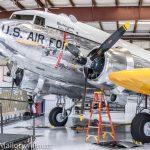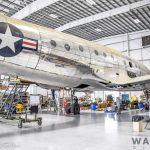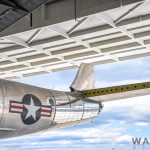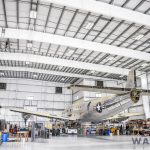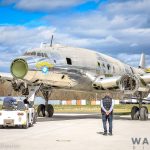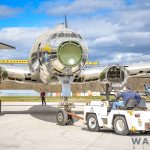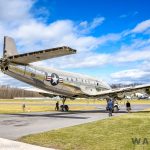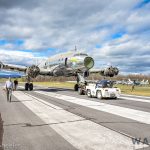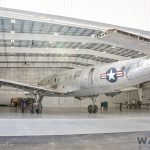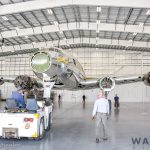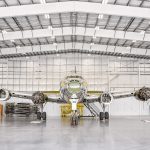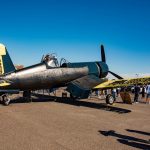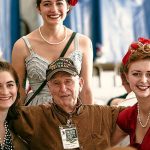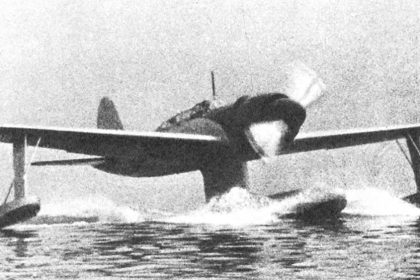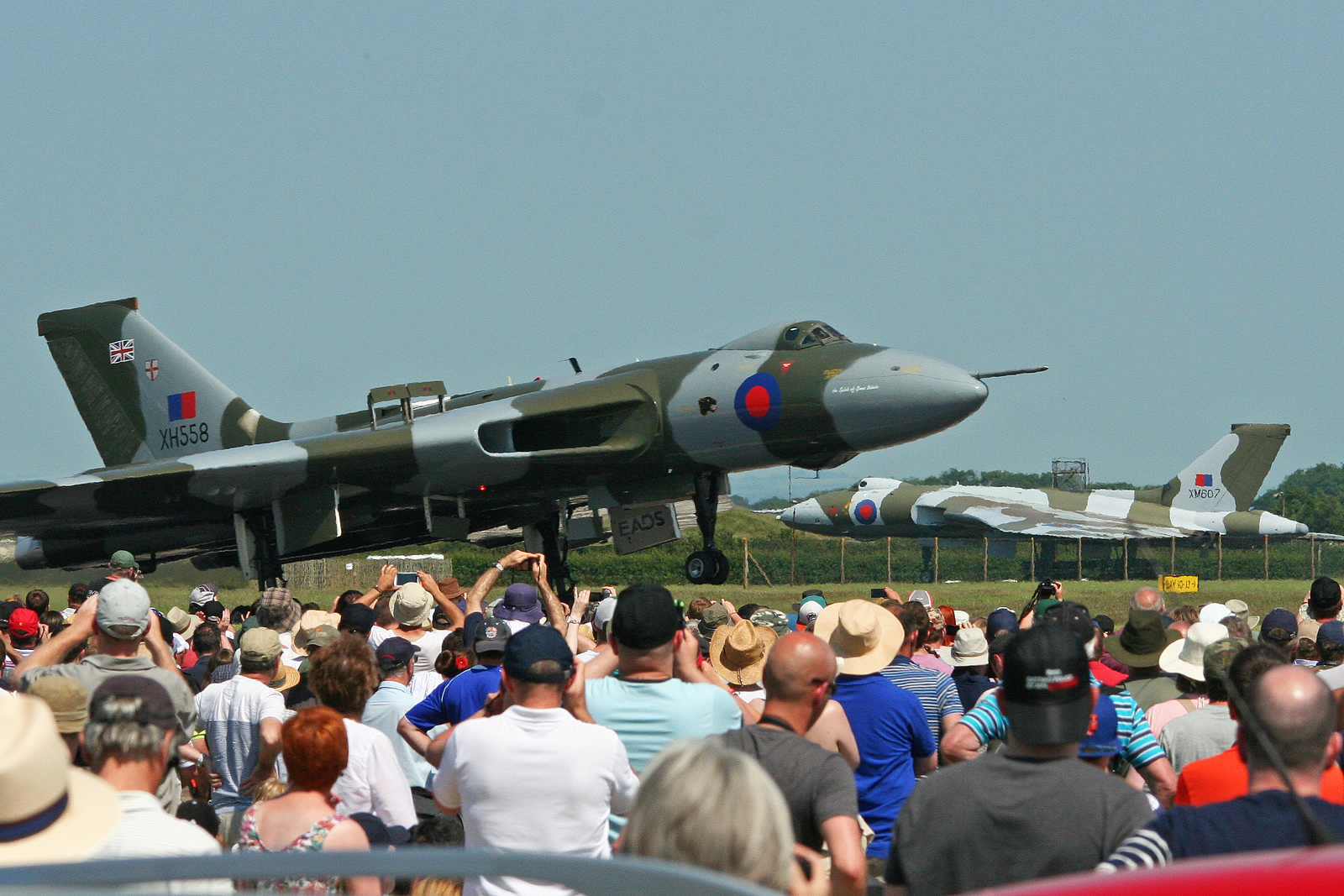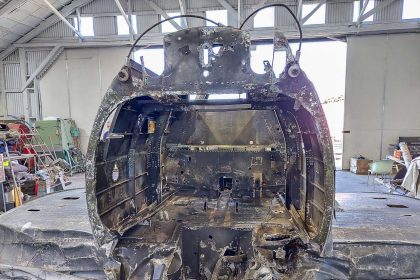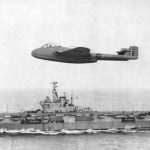By Richard Mallory Allnutt (editor)
Echoing loudly across the expansive, high-bay hangar, one can hear the staccato clatter of rivet guns and high-pitched squeal of air-powered drills tearing into sheet aluminum. There is a whole team of technicians, engineers and master craftsmen at work here in Bridgewater, Virginia, home to Dynamic Aviation. While the bulk of their labors are directed towards converting former turbo-prop airliners into sophisticated aerial platforms for government contracts, a dozen or so of these capable, highly trained personnel are dedicated to resurrecting an iconic piece of aviation history. They are restoring Columbine II, a Lockheed VC-121A Constellation (USAF s/n 48-610) which was once the official U.S. Air Force transport for President Dwight D. Eisenhower back in the early 1950s. This is the first aircraft which ever used the radio call sign ‘Air Force One’.
We have been reporting on this story for some time now, ever since Karl Stoltzfus – Dynamic Aviation’s founder – decided to rescue this extraordinary aircraft from almost certain doom in May, 2015. We covered his team’s nearly year-long endeavor to breath life back into the old bird for the ferry flight from her decades-long sojourn in the Arizona desert in Marana back to Bridgewater for a more formal restoration. Columbine II made that epic flight to her new home back in March, 2016, which we reported here. However, it was to be more than a year before Dynamic Aviation began to work on the Connie’s restoration in earnest. In that time, the company partially disassembled the airframe, removing the outer wing panels and tail feathers, many redundant internal systems and hosed the aircraft down to clean off a half-century of accumulated dirt and grime. They completed construction of a dual-purpose hangar to perform the restoration work, tucking the historic transport into the corner of this massive structure, and shrouding the work perimeter in darkened curtains to allow photography of their progress without risking images of the sensitive government work going on beyond them.
Dynamic Aviation’s goal is to transform this gutted Constellation back into her original guise as Columbine II, complete with an authentic executive interior which matches, as closely as possible, her appearance during the time she served in the Presidential fleet. This is a mammoth and expensive operation as they are taking the time and effort to ensure that the airframe has a long and secure future ahead of her as a flying exhibit, traveling across the country essentially as a flying classroom on American presidential history.
The work to restore Columbine II is also a classroom in and of itself for Dynamic Aviation’s work force, as young aviation technicians gain experience under the tutelage of more seasoned hands in her restoration. So there is a keen understanding in Karl Stoltzfus’s intentions with the aircraft.
During our visit to Bridgewater, we talked to both Karl Stoltzfus and Brad Holliday about their work on the aircraft. Holliday is in overall charge of the restoration, and described how they were approaching the project. He noted that, “The prime focus has been to break the aircraft into sections. We started with the wing. If you don’t have a sound wing – you don’t have an airplane… To this point, that has been the majority of our focus – not the sole focus, but we’ve really put a lot of effort into the internals and the externals of the wing, so we’ve opened up everything, we’ve pulled off the outer wing panels (we have them sitting over here) so we can have people focused on those specific areas. It’s a wet wing, so we’ve got fuel basically from Station 80, right here, this wing joint, all the way out to the next wing joint. And in the outer wings, [the fuel is stored] pretty much right to where the tip attaches, within the spars. The center section – this middle section of the wing – it includes the leading edge [for a total of 5,820 gallons].”
The team has also been working on the engine nacelles, as well as documenting what remains of the original Presidential interior and removing it for refurbishment or replacement. One of the key interior features they are trying to replicate involves the foldout beds which once stowed in the upper half of the fuselage, much like sleeper berths in an old Pullman railway car. For this, the team has had to rely upon photographs, vestigial mounting assemblies left on the airframe, and some incomplete assembly drawings which they have been able to locate. Even something as simple as this detail has required a significant investment of research and design time to complete, so it’s easy to imagine how much effort has gone into the aircraft as a whole. While only one of the four sleeper-berths will be functional, it will make for a more authentic experience for visitors to witness. The team has also been replacing all of the wiring in the airframe and the bulk of the hydraulic lines, a mammoth and complex undertaking on an aircraft this size.
Karl Stoltzfus has also been busy acquiring components for the project over the past few years, including whole sections of other C-121s to aid in the restoration. Indeed, the carcasses of three Super Constellations are now on site. These include C-121G 54-4062 which was stored alongside Columbine in Marana for many years, NC-121K Bu.141292 which was once part of the sadly long-gone Florence Air & Missile Museum in Florence, South Carolina, and also the forward fuselage of EC-121H 53-535. Each of these airframes has provided parts for the project, as well as interior fuselage fitments and reference details for restoration technicians to review. Stoltzfus also has other relevant components in storage for future use, such as the items needed to equip the Connie’s galley.
During our visit, Dynamic Aviation was in the final stages of erecting a new hangar into which Columbine II would move for the completion of her restoration work. This hangar is now complete, so back in mid-March before the pandemic shut down, Dynamic Aviation’s team towed the Connie inside her new home. This same hangar will also house the other historic aircraft in Dynamic Aviation’s Legacy Fleet, which includes, among others, C-47A 43-30665 Miss Virginia which Karl flew to Europe last year as part of the D-Day Squadron’s fleet in commemoration of D-Day 75, a Beech 18, T-6G and the original Travelair 4000 which once belonged to Chris Stoltzfus, Karl’s father, when he first got into the aviation business back in 1936. The intention is to turn this into a flying museum which the general public can visit. Given the attention to detail which Karl Stoltzfus and the rest of the team at Dynamic Aviation are famous for, it is sure to be a first class endeavor, and we can’t wait to see what they have in store for those with a passion for aviation history. We look forwards to bringing further updates on this important project sometime soon.
Many, many thanks indeed to Karl Stoltzfus, Brad Holliday and Sarah Hendricks for making this article possible!







